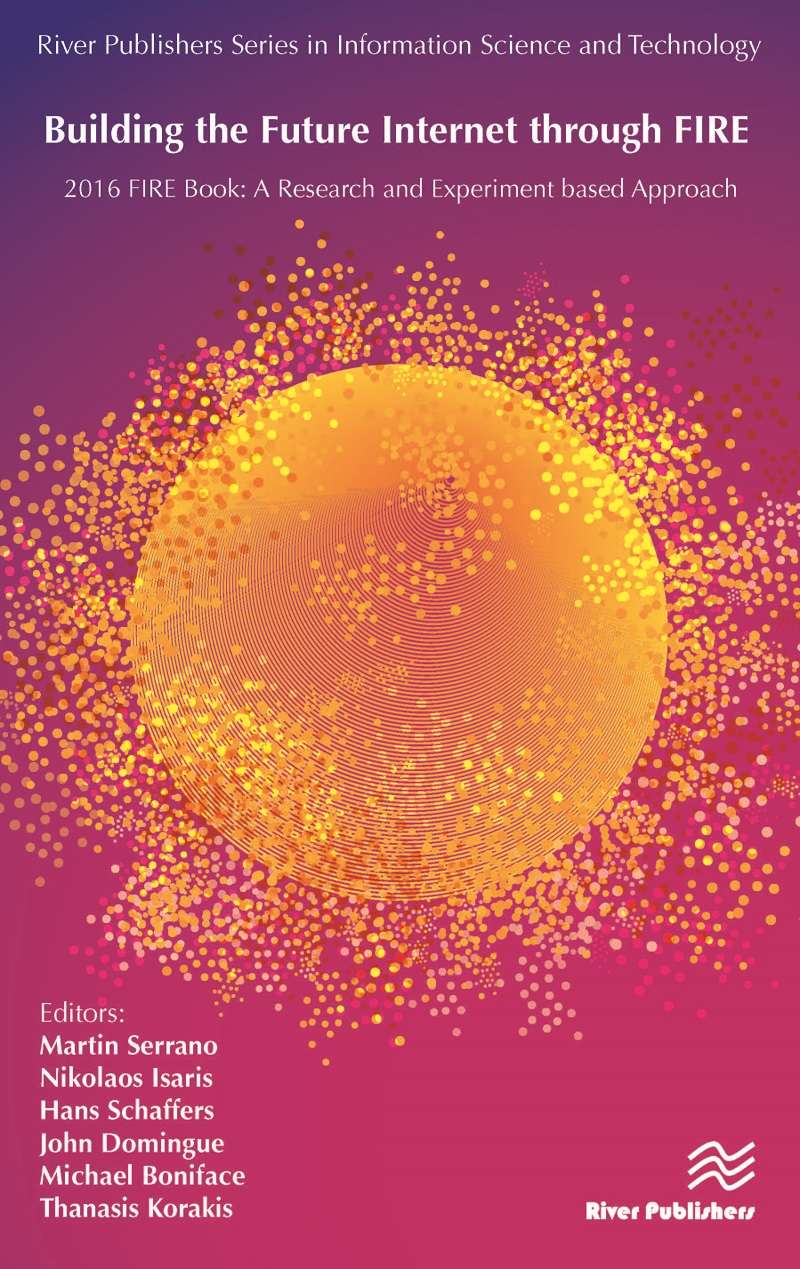
Building the Future Internet through FIRE
2016 FIRE Book: a Research and Experimentation based Approach
River Publishers Series in Computing and Information Science and Technology
Building the Future Internet through FIRE
2016 FIRE Book: a Research and Experimentation based Approach
Editors:
Martin Serrano, National University of Ireland Galway, Ireland
Nikolaos Isaris, European Commission, Belgium
Hans Schaffers, Saxion University of Applied Sciences, Netherlands
John Domingue, Open University, United Kingdom
Michael Boniface, IT Innovation, United Kingdom
Thanasis Korakis, Polytechnic Institute of NYU, USA
ISBN: 9788793519121
Chapter 2: Next Generation Internet Research and Experimentation
by Martin Serrano, Michael Boniface, Monique Calisti, Hans Schaffers, John Domingue, AlexanderWillner, Chiara Petrioli, Federico M. Facca, Ingrid Moerman,
Johann M. Marquez-Barja, Josep Martrat, Levent Gurgen, Sebastien Ziegler, Serafim Kotrotsos, Sergi Figuerola Fernandez, Stathes Hadjiefthymiades,
Susanne Kuehrer, Thanasis Korakis, TimWalters and Timur Friedman